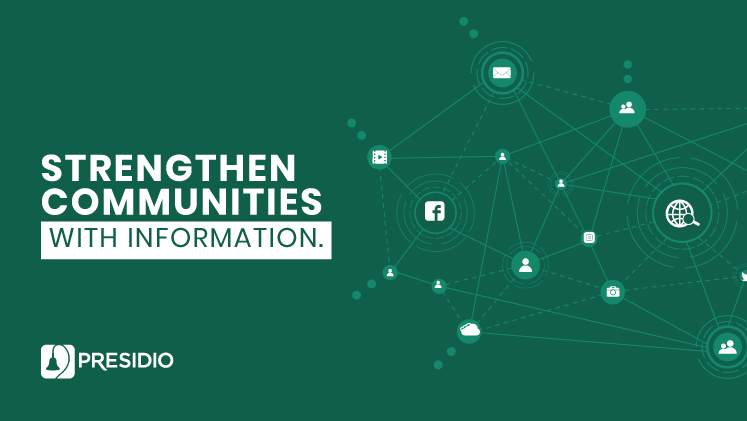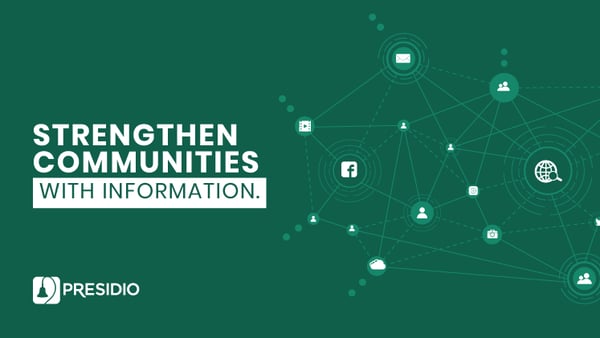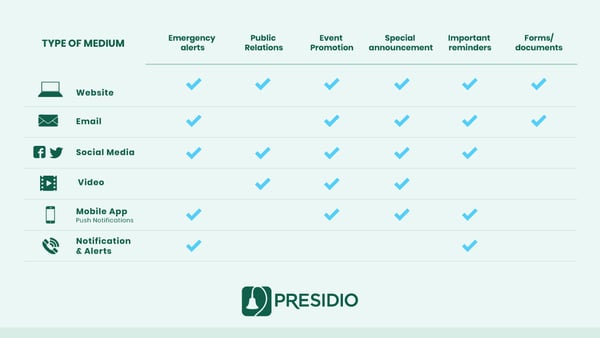Anaheim/OC Hotel & Lodging Association Taps Presidio for Management
As a leading public affairs and communications firm in Southern California, we at Presidio are thrilled to announce that the Anaheim/Orange County...

“Knowledge is power,” is a phrase that most of us accept as true. But what happens when you lack a particular piece of knowledge? That is the problem inherent in what we call information asymmetry.

Information asymmetry occurs when your audience lacks the knowledge that you have.
When you don't give your audience adequate information about your agency or company, you allow them to make assumptions that may not be beneficial to your mission and are often wrong about your organization. For example, not sharing information could give an impression that your agency isn’t doing enough work or isn’t making an effort to inform the people that they serve.
On the other hand, providing your audience with the same information you have empowers your audience and gives them equal understanding. By being transparent about your information, you build trust. Especially during a crisis, sharing relevant information bolsters your organization’s legitimacy and credibility. Establishing a trustworthy reputation reassures the audience that when an unexpected event occurs, they are in safe hands and there is no need to panic.
But building trust takes time.
That leads us to our next point: the 3 C’s.
At Presidio we have created the 3 C’s as a framework to help you build trust with your audience:

The content, tone, and wording of the information you share will differ depending on who your audience is. You want to be mindful of the people you are speaking to because you need to relate to them and make the information relevant to them.
For example, consider your target age demographic. Most parents would not be as responsive to TikTok video announcements as teens would be.
Brainstorming questions to consider:You want to create specific goals to help you come up with a detailed plan and measure your progress. Our team at Presidio recommends following the S.M.A.R.T goal framework.
You want to share carefully curated content. You don’t want to sporadically post information that may not be helpful or relevant to your audience or your brand. These are the things to consider when developing your communication strategy:
Every community is best informed in a different way, but communication staples include sending out email newsletters and encouraging people that you serve to follow you on social media.

Frequent sharing is vital to building a trusting relationship. Posting on your social media accounts once every 6 months won’t do. As we mentioned before, consistency is key to building a reputation of trust. Our team at Presidio recommends that you post 5 times a week if you are a new organization and 3-4 times a week for more solidified organizations. We also suggest that you break your content schedule into quarters so that you can take time to evaluate how your social media is growing and performing. You can then easily adapt your strategy if needed.
Creating a schedule helps you plan content in advance, keep track of the information that you’re sharing, and record audience engagement. A schedule also gives you a structured way to plan ahead for posts, making it easier to post consistently.
Kayla Park contributed to this post.
 Samantha Marquez
Samantha Marquez
Director of Public Agency Services
samantha.marquez@presidiosc.com
Samantha Marquez is a community relations and engagement specialist with over six years of experience in legislative affairs and targeted policy messaging on the local and state level. Before coming to Presidio, Samantha served as the District Director to the Majority Leader of the California State Assembly, where she served as a liaison between local public agencies and the state government. In the Assembly, Samantha was the Majority Leader’s principal aide for K-12 education and transportation.

Kayla Park
Intern
kayla.park@presidiosc.com
Kayla Park is a rising junior at the University of California, Los Angeles. She is passionate about bringing communities together with strategic and compelling communications, and she aspires to be a government and corporate liaison. Kayla is pursuing a B.A. in Public Affairs and plans on graduating in 2022.

As a leading public affairs and communications firm in Southern California, we at Presidio are thrilled to announce that the Anaheim/Orange County...

Presidio is excited to welcome the Arts Council for Long Beach (ACLB) as a new client for our government relations, strategic communications,...

Presidio, a leading public affairs firm, is pleased to announce that we have been retained by the California Association of Code Enforcement...